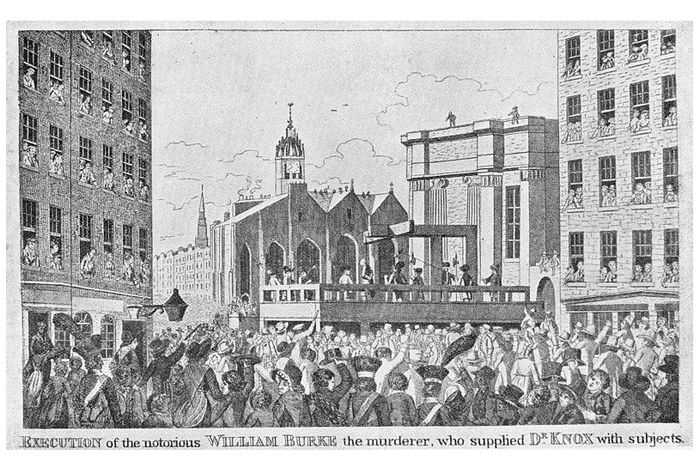Bones Found in Scotland Recall 19th Century Serial Killers

Evidence linked to one of Edinburgh's most nefarious trade has emerged from the rear garden of a house in the Haymarket district, according to archaeologists who have linked humans remains unearthed more than a year ago to the body snatching era made infamous by Irish killers Burke and Hare.
Belonging to four adults and at least one child, the disarticulated remains -- about 60 bones -- feature small holes used to re-articulate the skeletons with wire. This suggests they were used for anatomical display, said experts at consultants GUARD Archaeology.
"The forensic archaeologist at GUARD also identified that some of the bones had very smooth shinny patches, suggesting that they had been handled many times," John Lawson, from the City of Edinburgh Council Archaeology Service, told Discovery News.
Photos: Gory History of Irish Serial Killers Burke and Hare
Indeed the remains date back to the early 19th century, when the Scottish capital was a world leader in the study of anatomy.
"Edinburgh's medical schools acquired human remains legally from hangings, unclaimed poor or, in fact, from illegally dug graves," Lawson said.
It was at that time, when demand for fresh bodies far outweighed supply, when Irish immigrants William Burke and William Hare began their grisly trade.
From 1827 until 1828 the infamous duo delivered at least 16 bodies to Dr Robert Knox, an anatomy lecturer who was meticulously and obsessively devoted to getting the very best bodies to illustrate specific aspects of human anatomy for his students.
Sign up for the Live Science daily newsletter now
Get the world’s most fascinating discoveries delivered straight to your inbox.
Only the first of the bodies they sold to Knox died naturally. All the rest were murdered.
Serial Killers Shaped by Society
The pair lured poor people into Hare's lodging house, plying them with whiskey and beer. Then they killed the drunken, insensible victims by compressing their chest and covering their nose and mouth.
Later known as "burking," this method of suffocation left no suspicious homicide marks and provided the anatomy students with fresh, undamaged bodies.
This story was provided by Discovery News.












